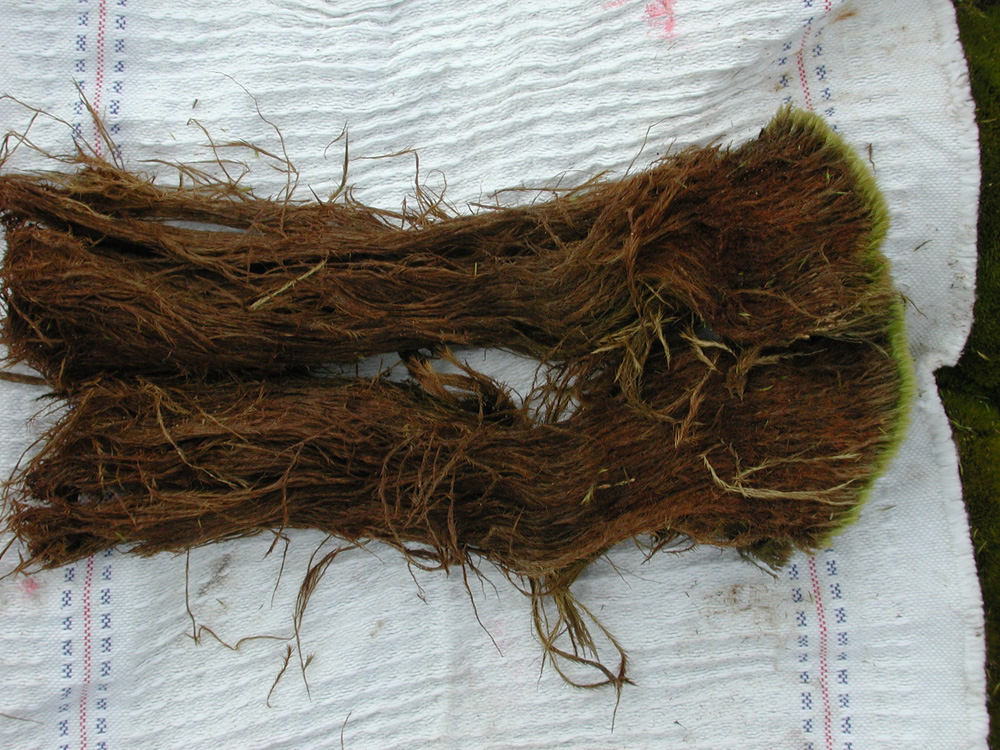Even after over 1,500 years frozen in Antarctic ice, moss can come back to life and continue to grow.
Writing in Current Biology, the team report that they observed moss regeneration after at least 1,530 years frozen in permafrost. For the first time, this vital part of the ecosystem in both polar regions has been shown to have the ability to survive century to millennial scale ice ages and it is the first study to show such long-term survival in any plant; similar timescales have only been seen before in bacteria. Mosses are known to survive environmental extremes in the short-term with previous evidence confirming up to a 20 year timescale for survival.
Mosses are the dominant plants over large areas and are a major storer of fixed carbon, especially in the north. They are an important part of the biology of both polar regions.

A moss core from near the surface. Credit: Esme Roads
Co-author Professor Peter Convey from the British Antarctic Survey explains, "What mosses do in the ecosystem is far more important than we would generally realise when we look at a moss on a wall here for instance. Understanding what controls their growth and distribution, particularly in a fast-changing part of the world such as the Antarctic Peninsula region, is therefore of much wider significance."
The team took cores of moss from deep in a frozen moss bank in the Antarctic. This moss would already have been at least decades old when it was first frozen. They sliced the frozen moss cores very carefully, keeping them free from contamination, and placed them in an incubator at a normal growth temperature and light level.
After only a few weeks, the moss began to grow. Using carbon dating, the team identified the moss to be at least 1,530 years of age, and possibly even older, at the depth where the new growth was seen.
According to Convey, "This experiment shows that multi-cellular organisms, plants in this case, can survive over far longer timescales than previously thought. These mosses, a key part of the ecosystem, could survive century to millennial periods of ice advance, such as the Little Ice Age in Europe. If they can survive in this way, then recolonization following an ice age, once the ice retreats, would be a lot easier than migrating trans-oceanic distances from warmer regions. It also maintains diversity in an area that would otherwise be wiped clean of life by the ice advance.
"Although it would be a big jump from the current finding, this does raise the possibility of complex life forms surviving even longer periods once encased in permafrost or ice."
Citation: Esme Roads, Royce E. Longton, Peter Convey, 'Millennial timescale regeneration in a moss from Antarctica' Current Biology 24(6) pp. R222 - R223 doi:10.1016/j.cub.2014.01.053





Comments